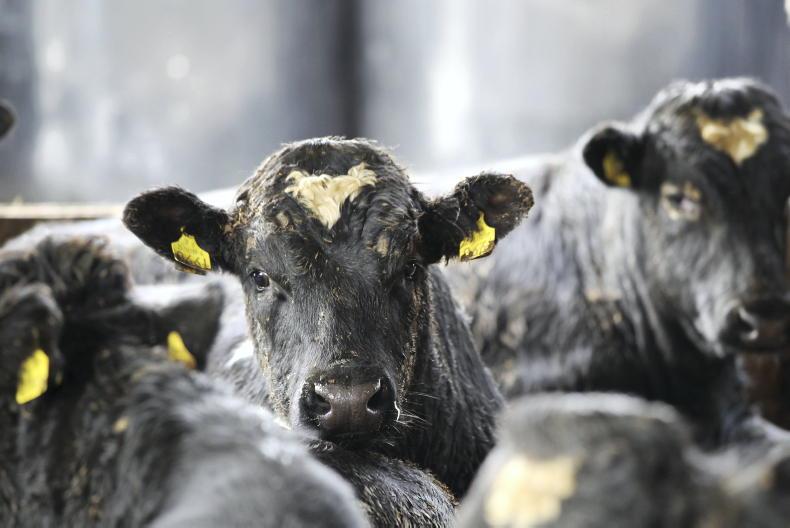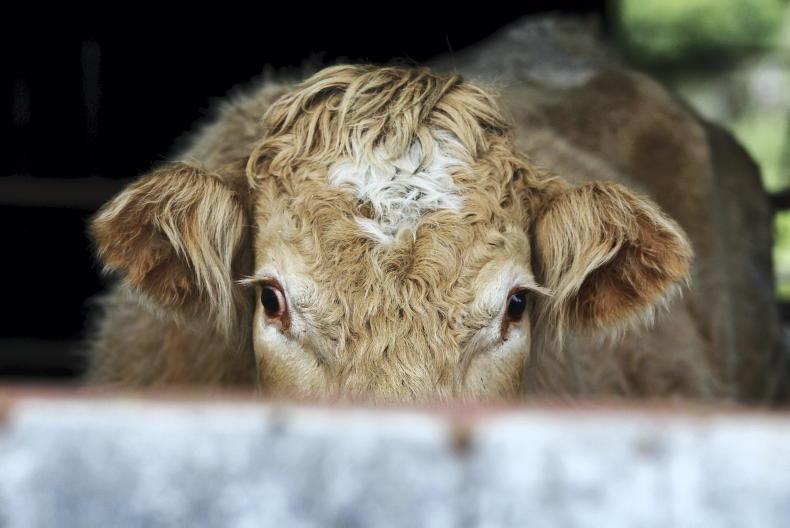Vets in Scotland have developed a new surgery technique that can treat a stiff leg condition, which often impacts the hind legs of muscular cattle.
Scientists at the Royal Dick School of Veterinary Medicine in Edinburgh said their modified surgery resolves the bovine neuromuscular condition, spastic paresis.
Bovine spastic paresis (BSP) is a sporadic, progressive neuromuscular disease that is thought to affect all breeds of cattle.
The disease manifests as a unilateral or bilateral hyperextension of the hind limb, due to increased muscle tone or permanent spasm of mainly the gastrocnemius and/or the quadriceps muscle.
The modified surgery can allow for speedy treatment of spastic paresis on-farm to relieve the condition, which, if left untreated, can compromise the animal’s welfare through the stress and pain associated with the muscle spasms involved.
Surgery benefits the animal’s welfare by relieving pain, improving movement, growth and ability to gain weight, and helps avoid economic losses to the farmer.
Alternative surgery
Researchers at the Royal Dick School of Veterinary Medicine developed a modified approach to a tenectomy – a procedure in which muscle spasms are remedied by surgically amending two of three tendons of the Achilles tendon.
The team found that the relevant tendons can be more easily accessed by making an incision closer to the hock (the joint midway down the leg). This allows for a simpler surgery in comparison to conventional tenectomy and neurectomy procedures used in the treatment of spastic paresis.

The new surgery can be carried out on cattle with the condition on-farm.
Relocating the site of surgery in this way overcomes difficulties associated with the usual practice, such as finding and distinguishing the three tendons of importance in a tenectomy surgery.
It also reduces the need for specialised electro-stimulation equipment, which is sometimes used to differentiate nerves in alternative treatment options such as tibial neurectomies, where the nerve leading to the muscle contractions is cut to prevent further overstimulation.
This less invasive approach, aided by easily identified surgical landmarks, allows for reduced surgery time in a farm environment, calls for less veterinary expertise, and lowers the cost and risks of anaesthesia.
This is of particular importance in older, heavier animals, where tibial neurectomies are more difficult to perform due to the increased depth of muscle within the surgical site.
Case study
Vets demonstrated their method in a bullock in which spastic paresis was affecting a hind limb.
They carried out surgery to two tendons in the animal’s leg – the medial and lateral tendons of the gastrocnemius muscle – without affecting the third, the superficial digital flexor tendon.

The condition can now be treated on-farm.
Their procedure was successful and the animal recovered fully with improved gait and mobility, with the pain involved with spastic contractions resolved.
The veterinary study was published in Vet Record Case Reports.
“Our method gives vets an option where time constraints in the field may be a concern, with a less invasive procedure with simple-to-identify surgical landmarks,” said vet David McFarland.
Vets in Scotland have developed a new surgery technique that can treat a stiff leg condition, which often impacts the hind legs of muscular cattle.
Scientists at the Royal Dick School of Veterinary Medicine in Edinburgh said their modified surgery resolves the bovine neuromuscular condition, spastic paresis.
Bovine spastic paresis (BSP) is a sporadic, progressive neuromuscular disease that is thought to affect all breeds of cattle.
The disease manifests as a unilateral or bilateral hyperextension of the hind limb, due to increased muscle tone or permanent spasm of mainly the gastrocnemius and/or the quadriceps muscle.
The modified surgery can allow for speedy treatment of spastic paresis on-farm to relieve the condition, which, if left untreated, can compromise the animal’s welfare through the stress and pain associated with the muscle spasms involved.
Surgery benefits the animal’s welfare by relieving pain, improving movement, growth and ability to gain weight, and helps avoid economic losses to the farmer.
Alternative surgery
Researchers at the Royal Dick School of Veterinary Medicine developed a modified approach to a tenectomy – a procedure in which muscle spasms are remedied by surgically amending two of three tendons of the Achilles tendon.
The team found that the relevant tendons can be more easily accessed by making an incision closer to the hock (the joint midway down the leg). This allows for a simpler surgery in comparison to conventional tenectomy and neurectomy procedures used in the treatment of spastic paresis.

The new surgery can be carried out on cattle with the condition on-farm.
Relocating the site of surgery in this way overcomes difficulties associated with the usual practice, such as finding and distinguishing the three tendons of importance in a tenectomy surgery.
It also reduces the need for specialised electro-stimulation equipment, which is sometimes used to differentiate nerves in alternative treatment options such as tibial neurectomies, where the nerve leading to the muscle contractions is cut to prevent further overstimulation.
This less invasive approach, aided by easily identified surgical landmarks, allows for reduced surgery time in a farm environment, calls for less veterinary expertise, and lowers the cost and risks of anaesthesia.
This is of particular importance in older, heavier animals, where tibial neurectomies are more difficult to perform due to the increased depth of muscle within the surgical site.
Case study
Vets demonstrated their method in a bullock in which spastic paresis was affecting a hind limb.
They carried out surgery to two tendons in the animal’s leg – the medial and lateral tendons of the gastrocnemius muscle – without affecting the third, the superficial digital flexor tendon.

The condition can now be treated on-farm.
Their procedure was successful and the animal recovered fully with improved gait and mobility, with the pain involved with spastic contractions resolved.
The veterinary study was published in Vet Record Case Reports.
“Our method gives vets an option where time constraints in the field may be a concern, with a less invasive procedure with simple-to-identify surgical landmarks,” said vet David McFarland.








 This is a subscriber-only article
This is a subscriber-only article










SHARING OPTIONS: